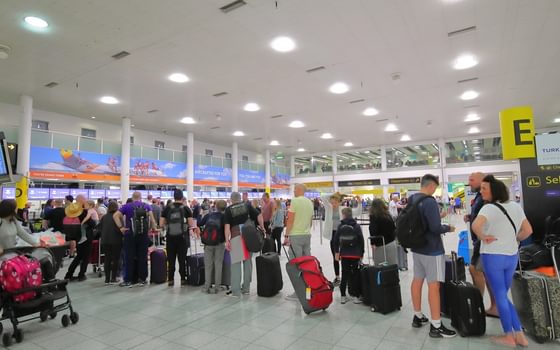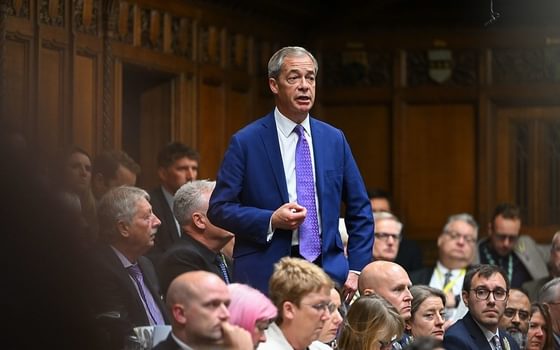A charge on frequent flyers would make post-pandemic holidays cheaper for UK’s poorest households
A new Frequent Flier Levy would raise £5bn a year, help the UK reach its 2050 climate target, and make flying fairer
10 July 2021
Introducing a levy for frequent flyers would make post-pandemic holidays cheaper for the UK’s poorest households and raise £5bn a year for the Treasury, according to research from the New Economics Foundation (NEF) and climate charity Possible, out today. The report finds that a Frequent Flier Levy would help the UK reach its carbon reduction target, reduce the amount of flights taken by the richest by one third, and level-up the opportunity for the less well-off to travel overseas.
The report shows how a Frequent Flyer Levy would keep greenhouse gas emissions from aviation within safe limits while ensuring that the less well-off still have the ability to fly. Currently 15% of people take 70% of flights abroad from the UK. The report shows that the top fifth of earners currently fly five times more often than the poorest fifth. The report also finds that, of the available ways to reduce aviation demand, a Frequent Flyer Levy would protect the highest number of aviation jobs in UK regions outside London and the South East – making a Frequent Flyer Levy the fairest option when it comes to reducing flights in line with climate targets.
Government polling last month found that 54% of people support a Frequent Flyer Levy, compared with just 19% opposed (see notes).
To meet the government’s net-zero emissions target for 2050, departing passenger numbers must not exceed 25% above pre-pandemic levels, according to the government’s official advisors, the Climate Change Committee (CCC). Despite the temporary reduction in flying during the pandemic, aviation demand is forecast to grow by almost twice this amount, meaning that new policies to cut air travel are expected to be necessary.
Under the proposed Frequent Flyer Levy, a passenger would be charged no tax on the first leisure flight they take in a year. The second flight would have an extra charge of £25, and the third a charge of £60. Each subsequent flight would have a higher levy rate (see Table 1). For business passengers, the first flight would be levied at £25. This would replace Air Passenger Duty (currently £13 for short-haul and £78 for long-haul flights in economy class) that currently applies to every passenger ticket, meaning passengers who fly only once a year would actually see the cost of their tickets go down. This would give more people in the UK’s poorest households a chance to travel overseas after the pandemic.
Detailed modelling within the report illustrates how a Frequent Flyer Levy would affect people’s behaviour. It finds that, under a Frequent Flyer Levy, the top fifth of earners are projected to fly around 30% less than they would have without the policy. The lowest fifth of earners would actually see a small increase (+0.5%) in the number of flights taken thanks to the lower tax rate paid on an individual’s first flight.
The report looks in detail at how a Frequent Flyer Levy would affect people across different income groups and regions, compared to other proposals to limit emissions from aviation (either increasing Air Passenger Duty or capping airport capacity). It finds that:
- With a Frequent Flyer Levy, tickets only increase in price for those who fly often – and for those who only fly once a year, the cost of airline tickets would go down. This would mean that the top fifth of earners would reduce their flights by almost 30% and the bottom fifth would not significantly change their flying patterns (+0.5%).
- If, instead of implementing a Frequent Flyer Levy, the government were to increase Air Passenger Duty, all tickets would increase in price. The poorest fifth of people would reduce their flying the most of all income groups, while the richest fifth would reduce their flying the least.
- If the government were to cap the number of departures from airports, all ticket prices would increase and, in regions with the biggest gap between demand and airport capacity, poorer people would lose out the most.
- A Frequent Flyer Levy also has the fairest regional impact. The levy would reduce the number of flights in London and the South East, where a higher proportion of high-income earners and frequent flyers are located, compared to other policies which favour travellers from London and the South East.
Alex Chapman, senior researcher at the New Economics Foundation (NEF), said:
“There is a very limited pot of carbon left which UK society can afford to emit before we must reach net zero. As it stands, a huge chunk of that pot will be used up by a tiny minority of super-wealthy frequent flyers. A frequent flyer levy can not only reduce emissions to a level which avoids climate breakdown, but it can support the government’s levelling-up agenda by improving the access of the poorest groups to the benefits of international travel. By reducing taxes on the first flight a person takes in the year, our proposed levy could help some of the UK’s poorest households afford a much-needed holiday after what has been an extremely tough period. And, by significantly increasing the average tax paid by someone who takes four or more flights per year, we can make sure the wealthiest people pay their fair share towards preventing climate breakdown.”
Leo Murray, director of innovation at Possible, said:
“Brits today take more international flights than any other nation, and the government’s own experts say there is no way the UK can honour our climate change commitments whilst increasing flights by as much as the aviation industry wants over the coming years. Generous tax breaks are a key reason air travel is growing so fast, but reversing them has often been seen by politicians as too difficult. Our work finds that while most of the policy options for keeping overall flying within safe limits for the climate might risk pricing the poorest out of the skies, a Frequent Flyer Levy would do the opposite – with most of the reductions in future flights coming from the richest households instead.
This research shows that by targeting the small numbers of problem flyers responsible for most of the environmental damage from air travel, it is possible for the UK to reduce aviation’s climate change impacts effectively in a way that leaves most people unaffected or better off.”
Notes
The report, A Frequent Flyer Levy, will be available at https://neweconomics.org/2021/07/a‑frequent-flyer-levy
The New Economics Foundation is a charitable think tank. We are wholly independent of political parties and committed to being transparent about how we are funded. www.neweconomics.org
Possible changed its name from 10:10 Climate Action on 10th October 2020. Possible is a UK based charity that brings people together to take positive, practical action on climate change. Combining individual and local actions with larger systemic change, we connect people with each other, and communities with ways to address the climate crisis. Wearepossible.org
The report compares three strategies for reducing emissions from aviation, and bringing passenger numbers in line with the Climate Change Committee’s preferred pathway: A frequent flyer levy, increasing the rate of Air Passenger Duty, or restricting airport capacity.
NEF modelling uses air traffic forecasts, and ‘elasticities’ measuring the relationship between ticket prices and flight frequency, provided by the Department for Transport (DfT) in their 2017 Aviation Forecasts. Our modelling assumes that a carbon tax (likely in the form of the UK Emissions Trading System) is also rolled out across the aviation sector, as this is already implicit within the DfT’s demand modelling.
Table 1 shows the details of the proposed tax schedule which would replace the current Air Passenger Duty tax.
Figure 2 below, shows how the number of flights taken by different income groups changes in the year 2050 (the UK’s Net Zero target year) as a result of the Levy, compared with increasing Air Passenger Duty.
The frequent flyer levy was first proposed in 2015 NEF report, Managing Aviation Passenger Demand With a Frequent Flyer Levy, which is available at https://neweconomics.org/2015/06/a‑fairer-way-to-fly
Polling data on the popularity of the frequent flyer levy can be found at Gov.uk (2021). Climate change and net zero: public awareness and perceptions. Retrieved from https://www.gov.uk/government/publications/climate-change-and-net-zero-public-awareness-and-perceptions
Campaigns Stop airport expansions
Topics Climate change Environment Transport






